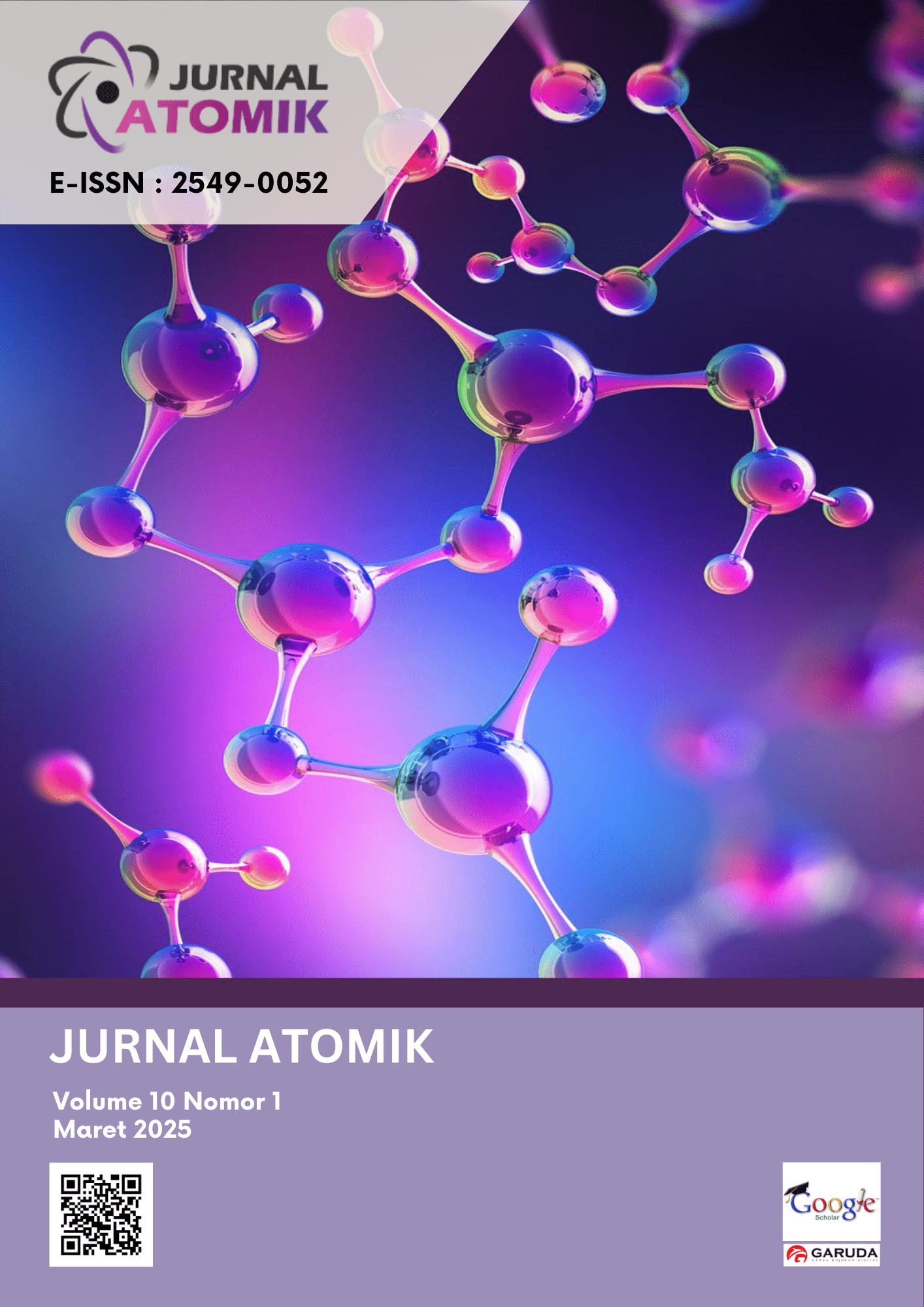ELEKTRODEKOLORISASI LIMBAH CAIR INDUSTRI SARUNG TENUN SAMARINDA MENGGUNAKAN ELEKTRODA PbO2/Pb DARI AKI BEKAS
Abstract
Electrodecolorization of liquid waste from the Samarinda woven sarong industry using PbO2/Pb electrode has been conducted. The purpose of this study was to decolorize woven sarong wastewater samples using the electrodecolorization method using lead dioxide (PbO2) as the anode and lead (Pb) as the cathode. Electrodecolorization is carried out by varying working potential, Na2SO4 electrolyte concentration, time and electrode distance. The dye concentration was determined using a UV-Vis spectrophotometer. The research results showed that the optimum conditions for electrodecolorization of woven sarong wastewater samples were using PbO2/Pb electrodes, namely with a working potential of 6 volts, a Na2SO4 electrolyte concentration of 0.25 M, a time of 60 minutes, and a distance of 1 cm. The percentage of decolorization of Samarinda woven sarong wastewater samples using PbO2/Pb electrodes, at maximum conditions was 98,75%.






